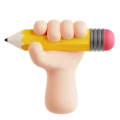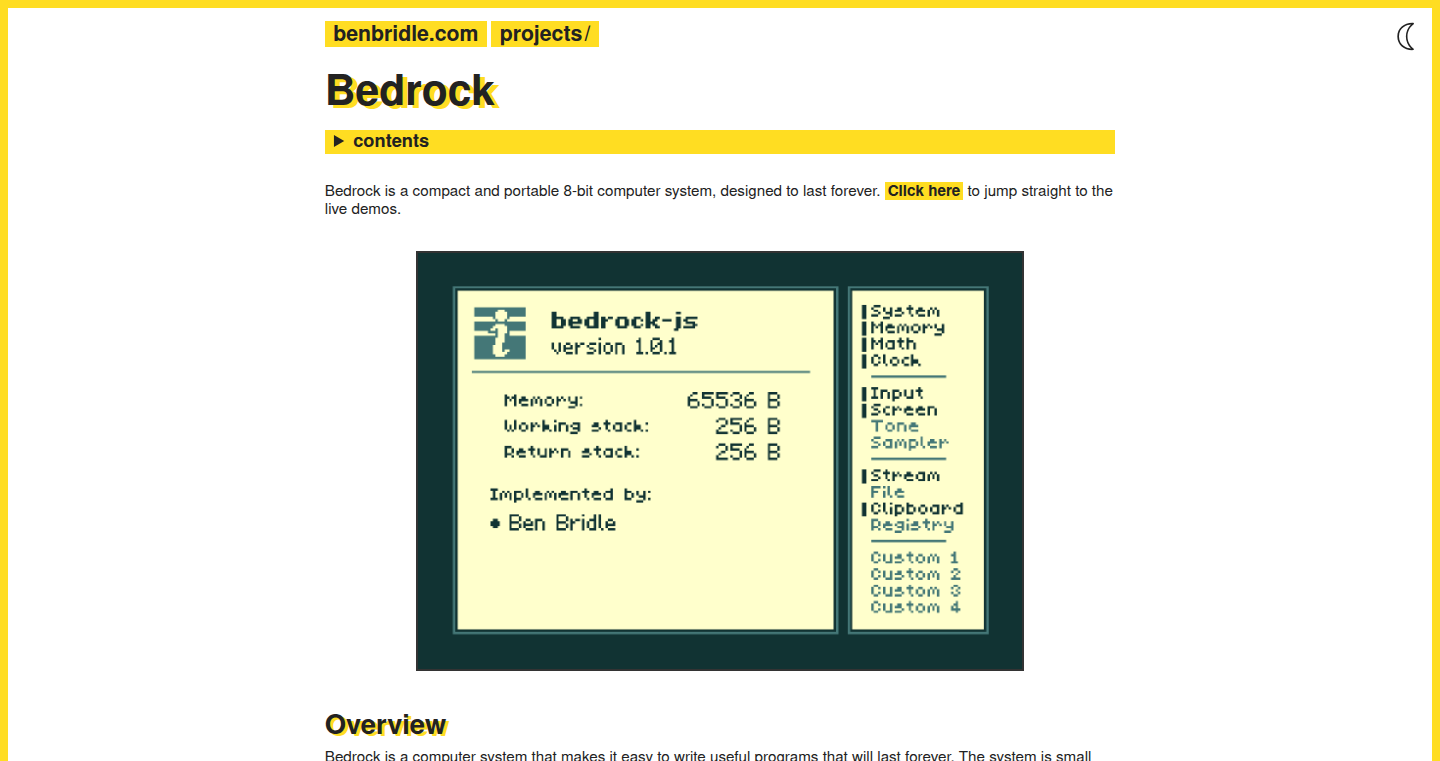

Highlight 1
Bedrock's small bytecode size ensures that programs load quickly, improving performance across devices.
Highlight 2
The ability to implement the runtime from scratch in a few hours is advantageous for developers seeking rapid prototyping and deployment.
Highlight 3
Customizable I/O device integration allows developers flexibility in adapting the runtime to different hardware specifications.

Improvement 1
Documentation could be more comprehensive to assist new users in getting started and troubleshooting issues.
Improvement 2
A community forum or support page would help users share their experiences and collaborate on projects.
Improvement 3
Including sample projects or templates would benefit developers looking for practical implementations of Bedrock.
Product Functionality
Expand the functionality by integrating example projects or boilerplate code to assist developers in building applications faster.
UI & UX
Improve UI/UX by making the website more visually engaging and easier to navigate, possibly incorporating a clearer layout for accessing documentation and resources.
SEO or Marketing
Enhance SEO by incorporating targeted keywords, creating blog content around use cases, and optimizing metadata to increase visibility in search engines.
MultiLanguage Support
Consider adding multi-language support to the website to cater to a diverse developer audience globally, potentially reaching more users.
- 1
What platforms does Bedrock support?
Bedrock is designed to run on any computer, console, or handheld device, giving it broad compatibility.
- 2
How do I get started with Bedrock?
You can start implementing Bedrock by following the provided quick-start guide on the project page, which walks you through the setup process.
- 3
Can I customize my input/output devices?
Yes, Bedrock allows you to add and customize input/output devices as needed for your projects.
